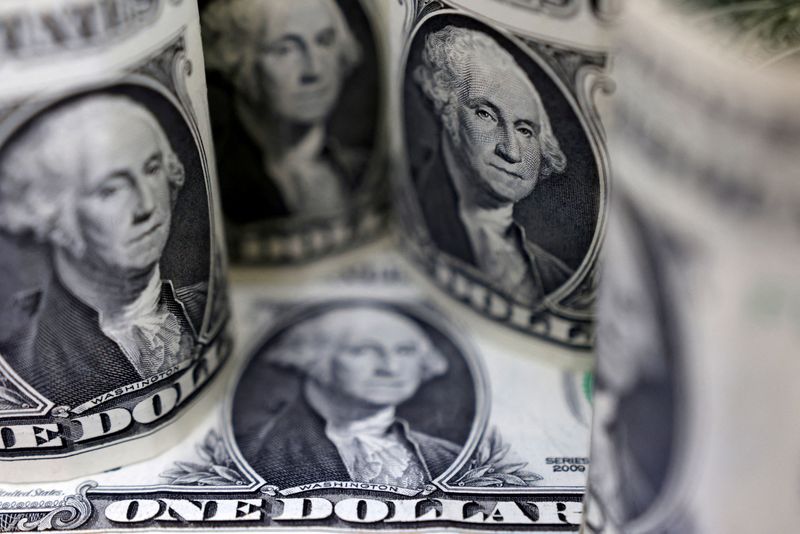© Reuters. FILE PHOTO: U.S. Dollar banknotes are seen in this illustration taken July 17, 2022. REUTERS/Dado Ruvic/Illustration
By Rae Wee
SINGAPORE (Reuters) -The dollar stabilised above a more than four-month low on Friday, with a key U.S. inflation gauge due later in the day that could offer clarity on how much room the Federal Reserve has to cut interest rates next year.
The greenback hit a five-month trough against the New Zealand dollar and a three-week low against the euro in early Asia trade, before turning positive later in the session.
The was last 0.27% lower at $0.6277 after hitting a session high of $0.6298, while the euro peaked at $1.10125 before retreating 0.12% to $1.0996.
Friday brings the U.S. core personal consumption expenditures (PCE) print – the Fed’s preferred measure of underlying inflation – and expectations are for the core measure to have risen 3.3% on an annual basis, compared to October’s 3.5% increase.
“The distribution for U.S. inflation is now considered skewed and one-sided, with a high probability of lower levels,” said Chris Weston, head of research at Pepperstone.
“Hence, the Fed has increased scope to ease policy should the need arise, and while Fed officials are saying their work is not done, and the last push to get to its 2% inflation target is the hardest part, they can front load cuts far more efficiently when core PCE is at 3.5% and falling.”
Against a basket of currencies, the greenback was last up 0.08% at 101.86, edging further from the more than four-month low of 101.72 hit in the previous session.
The was still on track for a weekly loss of about 0.73% though, set to extend last week’s 1.3% decline, after the Fed left the door open to rate cuts next year at its final policy meeting of 2023.
Sterling was little changed at $1.26875 and was headed for a marginal weekly gain, pressured by British inflation data out this week that came in well below expectations.
“As inflation edges closer to target, the market will have an increased tendency to disregard hawkish comments from policymakers,” said Jane Foley, senior FX strategist at Rabobank. “This is likely to be particularly the case in the UK in view of the weakness of the economic outlook.”
In Asia, the yen last stood at 142.25 per dollar, unfazed by Friday’s data that showed Japan’s core consumer prices rose 2.5% in November from a year earlier, marking the slowest pace of increase in over a year and taking pressure off the Bank of Japan (BOJ) to phase out its massive stimulus.
The Japanese currency looked set to end the week largely unchanged, after the BOJ had, earlier this week, maintained its ultra-loose policy settings and offered few hints on when it could move away from negative interest rates.
Credit: Source link




